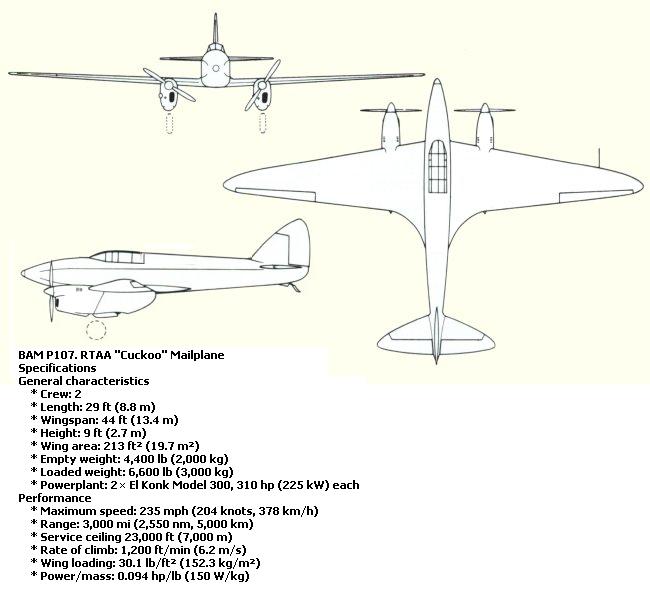You are not logged in.
Dear visitor, welcome to WesWorld. If this is your first visit here, please read the Help. It explains in detail how this page works. To use all features of this page, you should consider registering. Please use the registration form, to register here or read more information about the registration process. If you are already registered, please login here.

Quoted
Originally posted by HoOmAn
Well.....
I assume you are referring to the Siebel Si 204 (engl .) ?!?
I´ve never heard of a Sibelius Si-204.
Please also note that this never was a Czech plane. Based on the successful Siebel Fh 104 she was developed for the Luft Hansa and first build in the city of Halle before production was transferred to SNCAN in France and KD/BMM in Czechoslovakia (then Protektorat Böhmen und Mähren) after 15 prototypes.
I never read she was underpowered for the purpose she was designed for. Could you please state a source?
Thanks and cheers,
HoOmAn
This post has been edited 2 times, last edit by "howard" (Sep 30th 2008, 6:34pm)
Quoted
Originally posted by howard
Different wingbox and engine mount from the Czech C-3 design, HoOman. Also that is a postwar plane-a SNCAC 701 Martinet I believe?
H.
Quoted
Originally posted by howard
Well anyway, the Aero Company was assigned production design work on the Si-204 iin 1940. They went back to their A-204 as their build pattern and reworked it to make the plane when the Germans demanded it as a night flight trainer.
Quoted
Originally posted by Vukovlad
The confusion between the pre war Aero 204 and C-3 (Si-204 built by AERO) are quite common possibly because they were both built by AERO after the occupation. If you choose the A.204 then you also can easily explain the introduction of the A.304 later
Quoted
Originally posted by HoOmAn
Quoted
Originally posted by howard
Different wingbox and engine mount from the Czech C-3 design, HoOman. Also that is a postwar plane-a SNCAC 701 Martinet I believe?
H.
You still seem to be in error regarding those planes.
This is about the Aero A 204 and it may help with all the confusion which plane is actually meant:
"A 204 usually signifies Aero A 204. This Czechoslovakian airliner was flown in just its trial product form. Its manufacturer was Aero Vodochody. The primary user of the plane was the Czech Airlines. But it was quite shocking as well as not up to scratch that a British product, called the Airspeed Envoy, was chosen over Aero A 204 by the national airlines. As the plane failed to capture any customer, Aero started to develop the military version of A 204 known as A 304.
When Nazi Germany occupied Czechoslovakia, the Siebel Si 204 was manufactured by Aero. The pattern of A.204 and Siebel Si 204 were almost identical. People often get confused about these 2 models. C-3 is the accurate Czech designation for the Siebel product. A 204 discusses that this 2-crewed airliner could hold 8 passengers at a time. 2 Walter Pollux IIR engines of 360 hp or 110 kW were used as power plants. The wing area and empty weight of the plane was 46 meter square or 495 square ft and 4,300 kg or 9,500 lb respectively.
The wingspan of the aircraft was 19.20 m and 63 ft 0 in whereas its length was 13.20 m or 43 ft 4 in.A 204 describes that the Aero A.204 aircraft could attain a maximum speed of 320 km/h or 170 knots or 200 mph. The service ceiling and rate of climb of the plane was 5,800 m or 19,000 ft and 4.2 m/s or 820 ft/min in that order. The Aero A.204 was a large fixed-wing aircraft. The basic function of this plane was the carrying of paying passengers.
This fixed-wing aircraft was a heavier-than-air aircraft. In this case, for the production of lift, the movement of the wings in relation to the aircraft is not used. From small trainers and recreational aircraft to large airliners and military cargo aircraft- all can fall within the fixed-wing aircraft category. The maiden flight of Aero A.204 took place in 1936. But it did not enter into production at all. The Aero A.304 1st flew in 1937."
Your original statement below needs to be corrected.
Quoted
Originally posted by howard
Well anyway, the Aero Company was assigned production design work on the Si-204 iin 1940. They went back to their A-204 as their build pattern and reworked it to make the plane when the Germans demanded it as a night flight trainer.
Quoted
Originally posted by howard
Quoted
Originally posted by Vukovlad
The confusion between the pre war Aero 204 and C-3 (Si-204 built by AERO) are quite common possibly because they were both built by AERO after the occupation. If you choose the A.204 then you also can easily explain the introduction of the A.304 later
The A-304 was a bomber.
Quoted
Originally posted by Vukovlad
Quoted
Originally posted by howard
Quoted
Originally posted by Vukovlad
The confusion between the pre war Aero 204 and C-3 (Si-204 built by AERO) are quite common possibly because they were both built by AERO after the occupation. If you choose the A.204 then you also can easily explain the introduction of the A.304 later
The A-304 was a bomber.
And? It was used as an Liaison/Trainer/Patrol aircraft

Forum Software: Burning Board® Lite 2.1.2 pl 1, developed by WoltLab® GmbH
